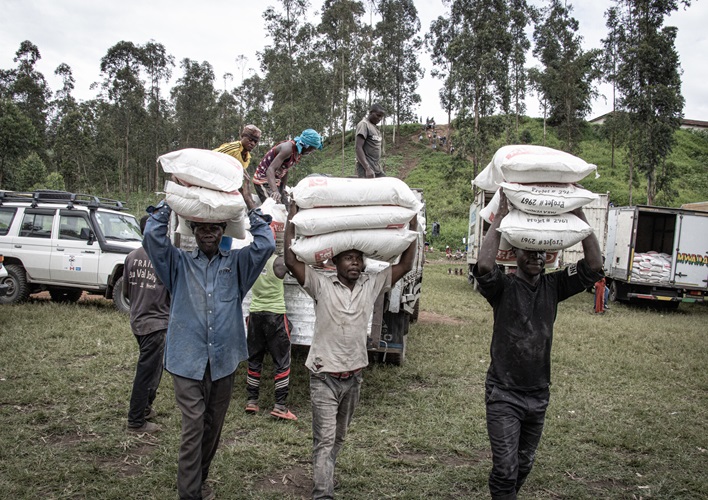Food aid, sent from Uganda via South Sudan, is distributed to internally displaced persons living in southeastern Central African Republic in August 2018. Canada fully untied its food aid in 2008. (UN photograph by Herve Serefio)
This article was originally published in The Hill Times.
It’s now been more than 10 years since Canada fully untied its food aid to developing countries.
When Cyclone Idai devastated crops in Mozambique and neighbouring countries in March, humanitarian agencies rushed in to supply food to the cyclone victims, sourcing that food from farming areas close to the disaster. That practice – local sourcing for food aid – is a relatively new development in the humanitarian field.
Before 2008, Canada’s food aid was almost all “tied” ie Canada gave money for international food aid, but 90% of that money had to be spent on Canadian farm products. The idea was to support Canadian farm prices while helping to feed the world, but food aid did not effectively address emergency food needs for four main reasons.
- The food took too long to reach the hungry. Shipping food from Canada took 3-4 months by which time, acute hunger had worsened and with this, the potential for long term effects of hunger from malnutrition and poor health.
- Shipping food was expensive. The costs of shipping were significant making Canadian sourced commodities 20%-30% more expensive than those in local or regional markets.
- The food that Canada shipped (usually wheat) was often not part of local diet. People traded it for familiar foods, but lost value in the exchange.
- Shipping food in from other countries deprived local farmers of a market.
Considering these challenges, Canadian Foodgrains Bank and Oxfam Canada started to advocate for Canada to “untie” its food aid and allow food aid to be purchased close to where it was needed. Research showed that food aid purchases were not making a significant impact on the price of Canada’s farm products. If it wasn’t helping Canadian farmers anyway, why not reform food aid so it worked better for those who needed it?
The Foodgrains Bank wrote to the Prime Minister in 2002, recommended that food aid be partially untied. Officials in the (then) Canadian International Development Agency quickly understood the benefits of untying food aid, but politicians were reluctant to act for fear of a backlash from Prairie farmers.
That’s when Canadian farmers stepped in to demonstrate their concern for global hunger. Several individual farmers and some farm organizations, including the Canadian Federation of Agriculture, endorsed the recommendation for 50% local purchase flexibility, and met with politicians.
Then nature intervened. In January 2005, a tsunami hit Indonesia, destroying villages and crops on the coast, but leaving inland rice fields untouched. It was a situation that demonstrated exactly why local purchase of food aid made more sense than shipping wheat across the ocean. The Canadian media told this story well. Within a few months, Canada had partially untied food aid, so 50% could be purchased from least developed and lower income countries. This paved the way for complete untying of Canadian food aid in 2008.
Research after the fact has demonstrated the benefits of untying food aid. Food got to where it was needed faster. Comparisons done by Canadian Foodgrains Bank showed that there was an average savings of 10 weeks shipping time. And untying resulted in cost savings, so there was more food available to people who needed it. Research by Cardwell & Ghazalian (at the universities of Manitoba and Lethbridge respectively) showed that untying also enabled Canada to send food aid to more countries.
Its now over 10 years since Canada fully untied its food aid. This policy change made Canada’s humanitarian aid more responsive to those in need and more cost-effective. And it all came about because of advocacy work in a unique collaboration between aid agencies and concerned farmers.
– Paul Hagerman, Director of Public Policy




